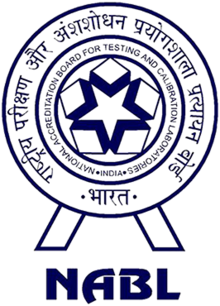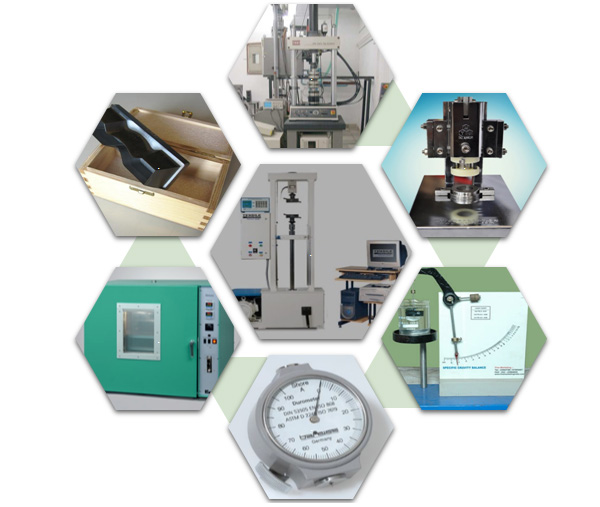+91 - 96540 46212


At Advance Rub Cork International, we prioritize quality and sustainability in every aspect of our operations. Our rubberized cork products are manufactured using premium materials and state-of-the-art techniques, ensuring consistent performance and durability. We adhere to stringent quality control measures to deliver products that meet international standards and exceed customer expectations.
| Quality Specification | Description and Measurement Units |
|---|---|
| Thickness | Typically specified in millimeters (mm) or inches (in) |
| Density | Expressed in grams per cubic centimeter (g/cm³) or pounds per cubic foot (lb/ft³) |
| Hardness | Measured on a durometer scale (e.g., Shore A or Shore D) |
| Compression Set | Percentage of residual deformation after compression and recovery |
| Tensile Strength | Measured in megapascals (MPa) or pounds per square inch (psi) |
| Chemical Resistance | Indicates the ability to resist specific chemicals, oils, solvents, etc. |
| Temperature Resistance | Specifies the temperature range within which the rubberized cork can perform effectively |
| Flame Resistance | Indicates the material's resistance to ignition and combustion |
| Electrical Insulation | Specifies the material's ability to insulate against electrical conductivity |
| Dimensional Tolerances | Specifies acceptable variations in thickness, width, and length |
| Industry Standards | Compliance with relevant standards such as ASTM, ISO, or customer-specific standards |
Please note that specific values or ranges for these specifications will depend on the application requirements and industry standards. It’s essential to consult with the manufacturer or supplier to determine the precise specifications suitable for your needs.
| 1 | Raw Material Inspection: | The quality control process begins with a thorough inspection of the raw materials, including cork granules or sheets and rubber compounds. This inspection ensures that the materials meet the specified quality standards and are free from defects, contaminants, or foreign particles. |
|---|---|---|
| 2 | Mixing and Blending: | During the mixing and blending process, precise control of the proportions and mixing time is crucial to achieve a consistent and uniform mixture. Quality control measures involve monitoring and adjusting the mixing parameters to ensure proper dispersion and distribution of rubber within the cork matrix. |
| 3 | Compression and Curing: | The rubberized cork is compressed and cured under specific temperature and pressure conditions. Quality control involves monitoring and controlling these parameters to ensure uniform curing and bonding between the rubber and cork components. |
| 4 | Dimensional and Visual Inspection: | Finished rubberized cork products undergo dimensional and visual inspections. This includes checking for dimensional accuracy, thickness, surface finish, and overall appearance. Any deviations or defects are identified and addressed to meet the desired quality standards. |
| 5 | Physical and Mechanical Testing: | Various physical and mechanical tests are conducted to assess the performance and quality of rubberized cork. This may include tests for elasticity, compression set, hardness, tensile strength, tear resistance, and density. Testing methods and acceptance criteria are determined based on industry standards or specific customer requirements. |
| 6 | Chemical Resistance Testing: | Rubberized cork may undergo chemical resistance testing to evaluate its resistance to various chemicals, oils, solvents, or other substances it may come into contact with during its intended use. This helps ensure the material's suitability for specific applications where chemical resistance is important. |
| 7 | Quality Management Systems: | Manufacturers may implement quality management systems, such as ISO 9001, to ensure consistent quality control practices throughout the manufacturing process. These systems include documentation, process control, traceability, and continuous improvement initiatives. |
By implementing these quality control measures, manufacturers can ensure that rubberized cork products meet the required specifications, perform reliably, and provide consistent quality to customers.
The quality of rubberized cork is determined by several factors that collectively contribute to its performance and suitability for specific applications.
Here are key factors that define the quality of rubberized cork:
| 1 | Composition | The composition of rubberized cork plays a significant role in its quality. This includes the type and quality of cork granules or sheets used, as well as the type and formulation of rubber compounds employed in the bonding process. The right balance and compatibility between cork and rubber components are crucial for achieving the desired properties |
|---|---|---|
| 2 | Bonding Strength | The bonding strength between the cork and rubber components is essential for the overall quality of rubberized cork. A strong and reliable bond ensures durability, resistance to delamination, and long-term performance in various applications. The bonding process and the selection of appropriate adhesives or bonding agents contribute to achieving a robust bond. |
| 3 | Elasticity and Compression Set | Rubberized cork should possess good elasticity and the ability to recover its original shape after compression. This ensures reliable sealing performance and the ability to maintain a tight seal even under varying pressures and temperature conditions. Low compression set indicates better resilience and long-term sealing effectiveness. |
| 4 | Thickness and Density | The thickness and density of rubberized cork influence its mechanical properties and performance. The material should have consistent thickness throughout and appropriate density to meet the specific requirements of the application. Consistency in thickness and density across the entire surface of the rubberized cork ensures uniform performance and reliable sealing capabilities. |
| 5 | Chemical Resistance | Depending on the intended application, rubberized cork may need to exhibit resistance to various chemicals, oils, solvents, or other substances it may come into contact with. The quality of rubberized cork is assessed based on its ability to withstand exposure to these substances without compromising its integrity, sealing properties, or physical characteristics. |
| 6 | Surface Finish and Visual Appearance | The quality of rubberized cork includes its visual appearance and surface finish. The material should exhibit a smooth and uniform surface, free from defects, blemishes, or irregularities. Aesthetically pleasing rubberized cork with consistent texture and color indicates attention to detail and manufacturing excellence. |
| 7 | Compliance with Standards | Meeting relevant industry standards and specifications is crucial for ensuring the quality of rubberized cork. Compliance with standards such as ASTM (American Society for Testing and Materials) or specific customer requirements ensures that the material meets the necessary performance criteria and undergoes stringent testing and quality control procedures. |
Manufacturers implement quality control measures and conduct various tests, such as dimensional checks, physical and mechanical tests, chemical resistance testing, and visual inspections, to ensure that rubberized cork meets the defined quality standards. The combination of these factors contributes to the overall quality and performance of rubberized cork in its respective applications.
Various quality testing equipment can be used to test the properties and performance of rubberized cork. Here are some commonly used testing equipment for assessing the quality of rubberized cork:


| Durometer | A durometer is used to measure the hardness of rubberized cork. It applies a specific amount of force to the material and measures the indentation or penetration. Durometer readings help determine the material's hardness, which is typically specified using scales such as Shore A or Shore D. |
|---|---|
| Thickness Gauge | A thickness gauge is used to measure the thickness of rubberized cork. It provides precise measurements, ensuring compliance with the specified thickness requirements. This equipment is particularly important for applications where precise thickness is critical, such as gaskets or seals. |
| Tensile Testing Machine | A tensile testing machine, also known as a universal testing machine, is used to evaluate the tensile strength and elongation properties of rubberized cork. The machine applies a controlled force to a test sample and measures the resulting stress and strain. This test helps determine the material's mechanical strength and elongation capabilities. |
| Compression Set Apparatus | Compression set apparatus is used to determine the compression set of rubberized cork. It applies a specific amount of compression to a test sample, then measures its ability to recover its original shape after the compression force is released. This test provides insights into the material's resilience and ability to maintain an effective seal over time. |
| Chemical Resistance Testing Equipment | Various equipment may be used to assess the chemical resistance of rubberized cork. This can include immersion testing in specific chemical solutions, exposure to chemicals under controlled conditions, or tests to evaluate the material's reaction to various substances. The specific equipment used depends on the chemicals being tested and the desired evaluation method. |
| Dimensional Measurement Tools | Equipment such as calipers, micrometers, or laser scanners can be used to measure the dimensional accuracy of rubberized cork. These tools ensure that the material meets the specified dimensional tolerances, including thickness, width, and length requirements. |
| Visual Inspection Tools | Visual inspection plays an important role in assessing the quality of rubberized cork. Tools such as magnifying lenses, microscopes, or visual inspection systems can be used to examine the surface finish, uniformity, and detect any defects, blemishes, or irregularities in the material. |
+91 - 98114 10995
+91 - 96540 46212
md@advrci.com
bd@advrci.com
info@advrci.com
advancerubcork@gmail.com
Alwar, Rajasthan






